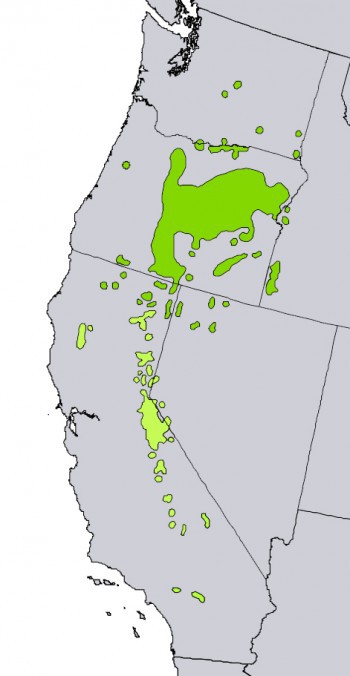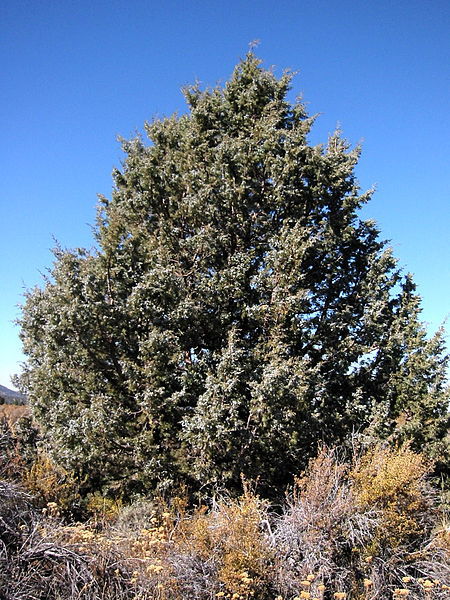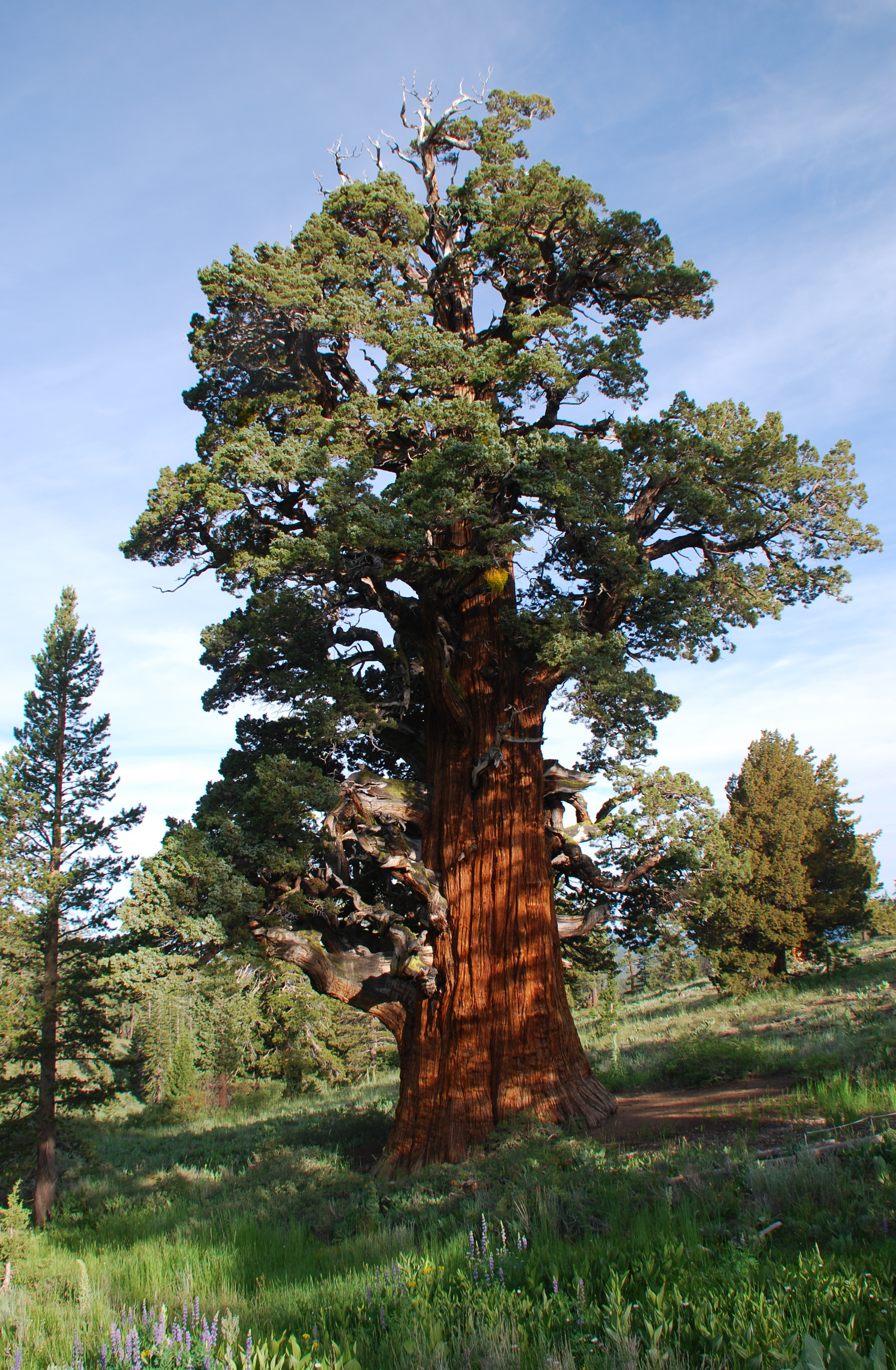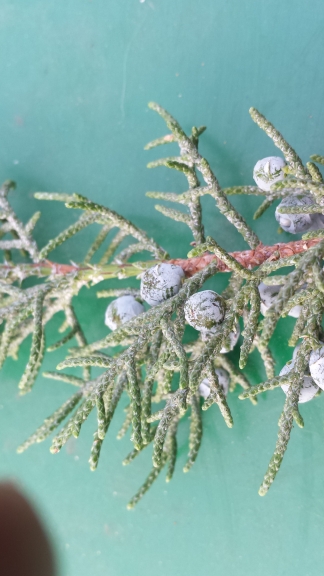
Juniperus occidentalis. as described in 1838 by William Jackson Hooker (1785-1865), in Flora Boreali-Americana, 2nd edition, is commonly known as Western or Sierra juniper.
There are two recognized Juniperus occidentalis varieties, treated as subspecies by some botanists:
Description. Western juniper is an evergreen coniferous shrub or small tree which grows to mature heights of 12 to 50 feet (4 - 15 m) tall. Exceptionally tall specimens can be found in the John Day area of Oregon well in excess of 80 to 90 feet (26 - 28 m) tall, competing for sunlight among Ponderosa pines (Pinus ponderosa) at the bottom of deep side canyons, but on open and barren ground 12 to 50 feet (4 - 15 m) with a bushier growth habit is more common.
Champion Tree. The Bennett juniper in the Stanislaus National Forest of California is considered the oldest and largest example at possibly 3,000 years old, with a height of 83.2 feet (26 m) with a diameter of 12.4 feet (3.88 m) at breast height.

Distribution. This species is native to U.S.A - southeastern Washington, eastern and central Oregon, southwestern Idaho, northeastern California and extreme northwest Nevada, north of 40°30' N latitude, east of the Cascade Range, growing in the mountains at elevations of 2,600 to 9,800 feet (800 - 3,000 m) above sea level, rarely down to 330 feet (100 m). It is normally found growing on dry, rocky sites where there is less competition from larger species like Ponderosa pine (Pinus ponderosa) and coastal Douglas-fir (Pseudotsuga menziesii). In very exposed positions at high altitude, they can assume a krummholz habit, growing low to the ground even when mature with a wide trunk. Hybrids with Utah juniper (Juniperus osteosperma) are occasionally found.




